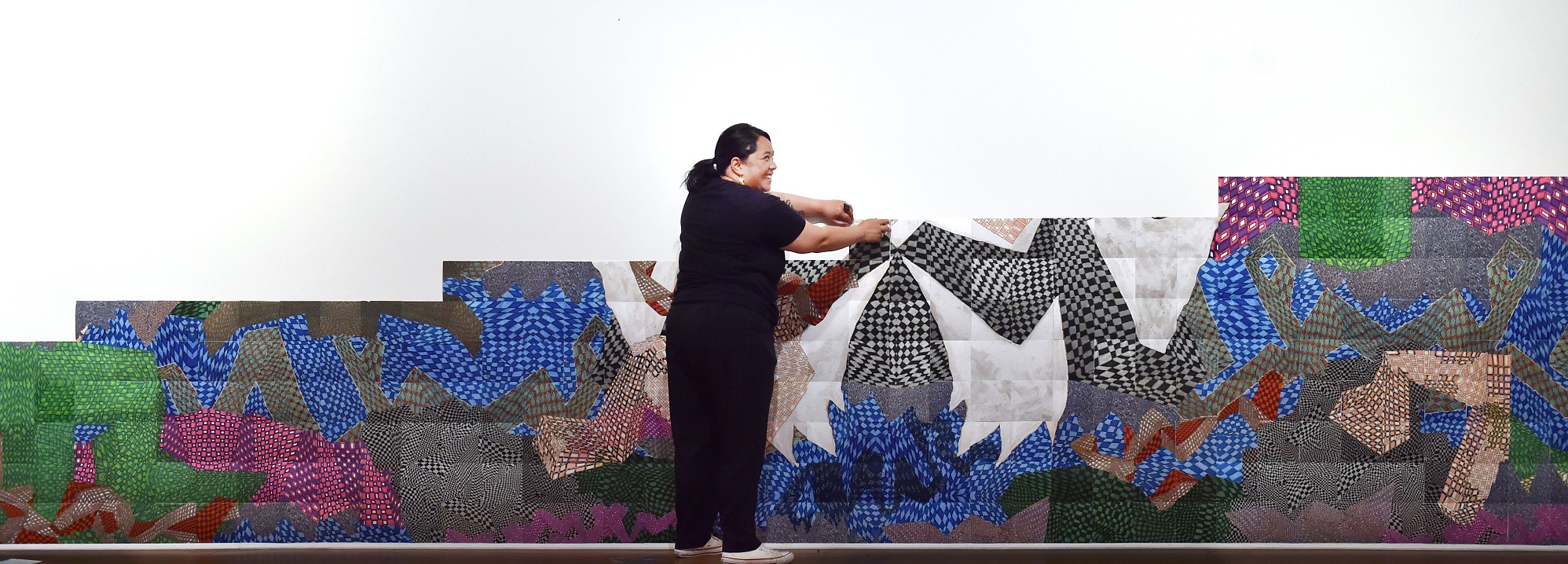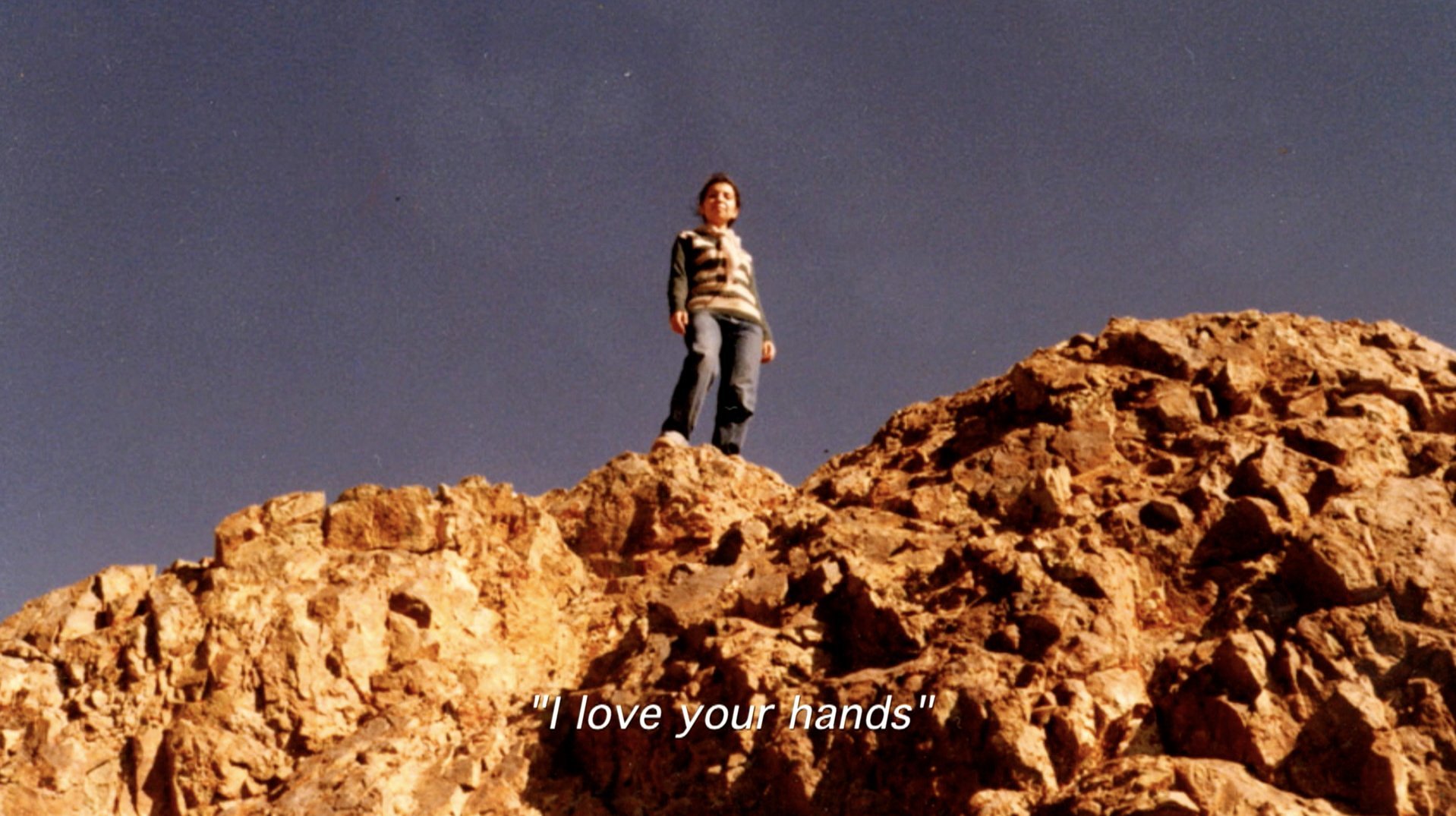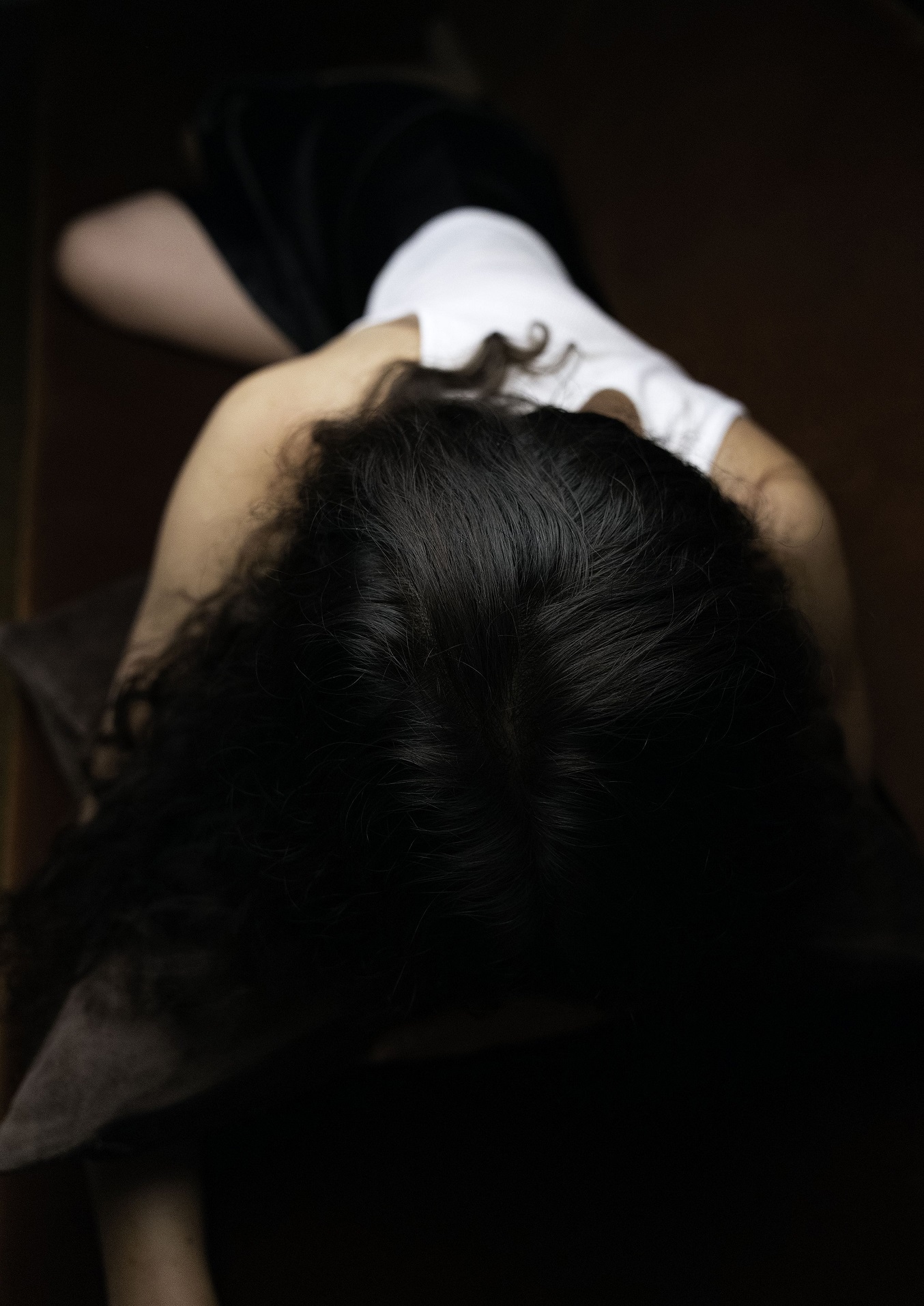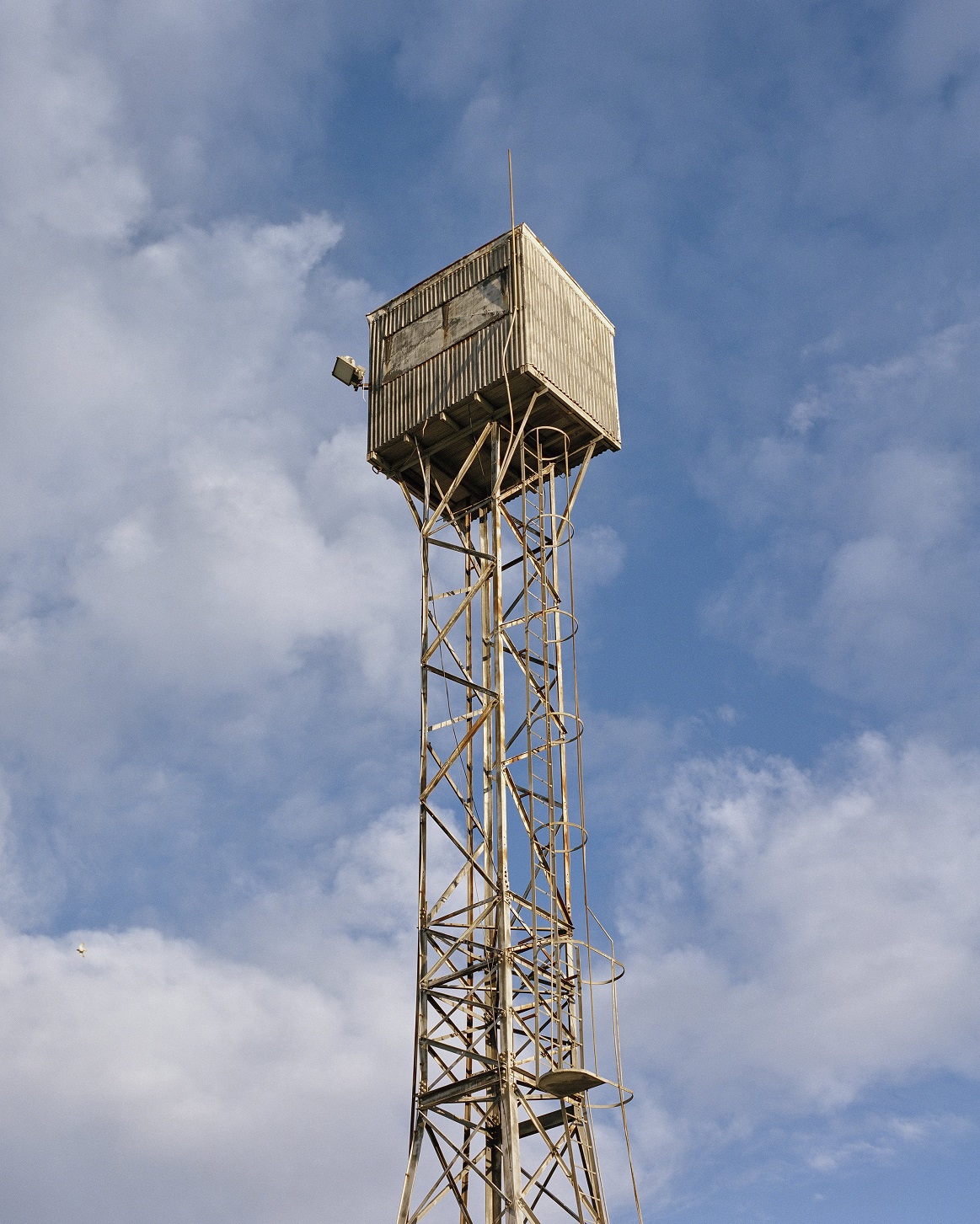
Just like Janet Lilo’s jigsaw-like murals, five contemporary New Zealand artists working across photography and moving image have slotted together despite their diversity.
Works by Lilo, Conor Clarke, Selina Ershadi, Meg Porteous and Louise Menzies have been brought together by curators Sophie Davis and Lucy Hammonds to exhibit in "Vital Machinery" at the Dunedin Public Art Gallery.
Davis says the concept for the show came together after she introduced the film work Amator by Auckland artist Selina Ershadi to Hammonds. The film uses material shot by the artist’s mother Azita Chegini, at the artist’s request, as she walked through the Alborz mountains that surround Teheran.
"It started the dialogue off of what the exhibition could be."
Hammonds says it led to conversations around how cameras can be used and by whom.
"That led us into other works and other artists — not that they all relate back to Selina’s work, but it became a stepping stone."
It was decided early on to bring together existing works by the artists working in photography, photographs or moving image, film or digital video to progress that conversation.
"We were talking through works that already existed and thinking about how by bringing them together we could use the exhibition to think about ideas activated through those practices.
"It’s got a real generative kind of aspect. By bringing the five bodies of work together it creates space where lots of interesting, rich and relevant ideas coalesce in the gallery and therefore can be thought about and be discussed and create some energy.

The works they selected have all been made during the past four years, a period of time when the country and world was affected by the Covid-19 pandemic, Davis says.
It also means a lot of work made during that time has not yet been shown and most of the works chosen for the exhibition have not been exhibited in Dunedin before.
"It’s all quite fresh and spans quite an interesting period of time, including the pandemic, when making work was very difficult, and while that’s not something particularly overt in the exhibition, it is a background note."
The lens-based works the artists are doing are motivated by different things, but it is possible to see some shared concerns and politics coming through.
"It reaches out beyond that in some cases."
Some interesting and unexpected things have come out of the exhibition. One of those is the research trip Lilo made to Dunedin to visit the gallery.
It means her work is different from the other four, as it has been influenced by the city and the gallery space.
Lilo works across many different forms of work, often in relation to film, photography and documentary, and is known for creating large-scale photo murals.
"It’s ended up the work she has made for us comes on the 10-year anniversary of her beginning these large-scale murals made out of tiled photographs. Her work is a much more abstract way to think about the photograph and print and how they might operate within the gallery," Hammonds says.

The work picks up on a thread among all of the artist’s work; that of the forces at play that shape the lives of artists.
"The forces at play, the responsibilities, demands and possibilities that circulate around being an artist and how it meets people’s lives. A lot of things like that come forward in the exhibition — a swirling of currents and how they make their way into works."
Perhaps that can be part of the nature of the artists’ practices, she says.
"Photography and film do have the ability to capture and document that intersection between creative thinking and critical thinking, and people’s lived realities."
Davis says the lens or camera is becoming more pervasive within people’s lives, and many artists are specifically considering how its role has has shifted over time.
Porteous is particularly interested in the shifting role of the different kinds of images people create of themselves, the way it has unfolded over time and what it says about people.
"She’s interested in context, like family photography and those kind of really foundational moments where we might encounter photography.
"There is also the heightened conversation around the digital image and the currency of the digital image."
Part of her work reaches back into the history of photography and portraiture, which also comes up in the work of Conor Clarke.
"She is quite interested in the way the land has been documented through photography, and the agency of the photograph in an Aotearoa context and for her personally.

Menzies has made some new works which incorporate photographs from lockdown, along with abstract phone notes and writing by her daughter.
"She has created these beautiful collages."
Hammonds says the point of bringing the five artists together is to create a productive space to look at the camera and people’s proximity to the camera in social media times.
"The phone camera in particular — in the digital space — has shifted not just an artist’s relationship to image-making, but it is a very pervasive agency in our lives, and I guess there [are] a lot of works in the show which offer the opportunity to think about that."
In the internet age, how much people can trust the images, how stable or authentic they might be and who is standing on both sides of image capture and image dissemination are important and interesting issues to talk about.
"You layer upon that [that] they are all women and there are a lot of layers of feminist thinking, of thinking around labour and our lives, around parenthood and around the juggle of all of those different things, depending on their experiences.
"It’s become an interesting and dynamic opportunity."
Hammonds says two of the artists’ work is based in moving image, while the other three are working in different ways in still photography.
"That is interesting as often in exhibition-making those two things are quite distinct from one another, but it seemed very natural and quite interesting to bring those spaces together.
"It also speaks to how we think about the collapsing of genres or types of creative practice now.

For Davis, the exhibition is given a local flavour through Menzies’ film — made while she was the Frances Hodgkins fellow — and Lilo’s work, influenced by her time in Dunedin.
"It has a local connection, but also expands out a lot, and does not shy away from how big, or [how complex] and [rich], ... [the] practice happening through camera work happening in this country [is] at the moment.
"The exhibition is only a small sample of that."
The deliberate mix of still and moving image is also important, she says.
"We wanted to bring a sense of the restlessly shifting position of the camera, and the person who is holding the camera and the subject, and challenge those relationships through the works."
Hammonds says it is not hard to find commonalities in the artists’ work but "practically, physically, aesthetically and conceptually they are very distinct from one another".
"That’s not a mistake either. It’s quite obvious when you look at the works that it is giving each artist distinct space to bring an audience to their practice.
"For the first time, for many of them."
TO SEE
"Vital Machinery" — Conor Clarke, Selina Ershadi, Janet Lilo, Meg Porteous, Louise Menzies, Dunedin Public Art Gallery, November.












